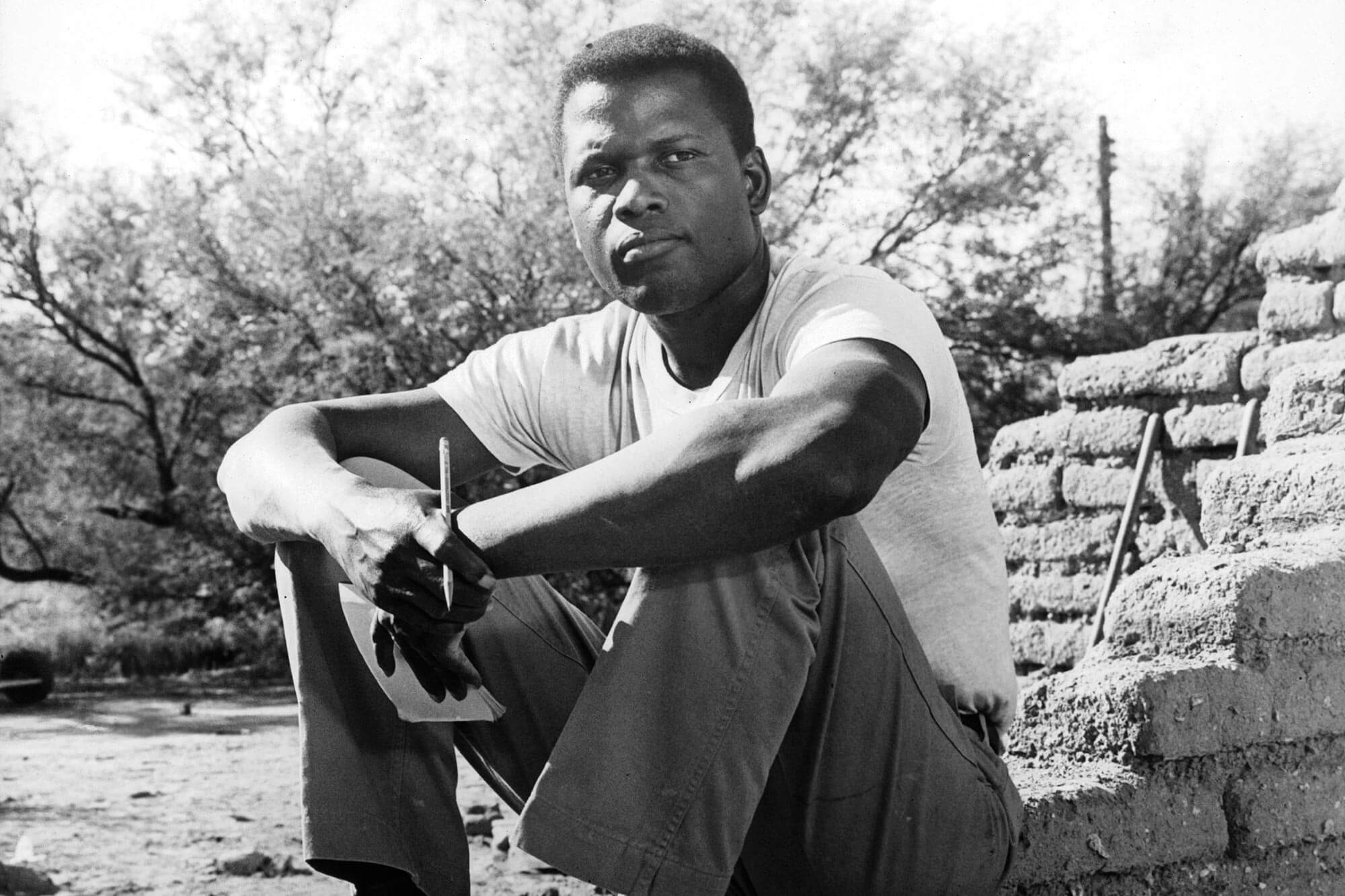World News
Sidney Poitier’s Groundbreaking Leading Role in ‘No Way Out
Introduction
‘ Sidney Poitier is an iconic actor who has made a lasting impact on the film industry. His groundbreaking leading role in the 1950 film No Way Out is a testament to his talent and influence. The film was the first major Hollywood production to feature an African-American actor in a leading role, and Poitier’s performance was praised by critics and audiences alike. No Way Out was a groundbreaking film that challenged the status quo and paved the way for more diverse representation in Hollywood. Poitier’s performance was a major step forward in the fight for racial equality and helped to open the door for other African-American actors to follow in his footsteps.
The use of technology in the classroom has become increasingly popular in recent years. As technology advances, more and more teachers are finding ways to incorporate it into their lesson plans. Technology can be used to enhance the learning experience, making it more engaging and interactive for students. One of the most common ways technology is used in the classroom is through the use of computers. Computers can be used to access the internet, allowing students to research topics and find information quickly and easily.
They can also be used to create presentations, documents, and other materials. Computers can also be used to play educational games and videos, which can help students learn in a fun and engaging way. Another way technology is used in the classroom is through the use of tablets and other mobile devices. These devices can be used to access the internet, as well as educational apps and programs. They can also be used to take notes, create documents, and store information.
Finally, technology can also be used to facilitate communication between teachers and students. For example, teachers can use email, text messaging, and other forms of communication to keep in touch with their students. This can help teachers stay connected with their students and provide them with feedback and support.
Overall, technology can be a great tool for teachers to use in the classroom. It can help make learning more engaging and interactive, as well as facilitate communication between teachers and students. By incorporating technology into the classroom, teachers can create a more effective learning environment for their students.

Exploring Sidney Poitier’s Impactful Performance in ‘No Way Out’
Sidney Poitier’s performance in the 1950 film “No Way Out” is one of the most impactful performances in cinematic history. Poitier’s portrayal of Dr. Luther Brooks, a black doctor in a segregated hospital, is a powerful example of the struggles faced by African Americans in the 1950s.
The film follows Dr. Brooks as he is called to the hospital to treat a white patient, only to be met with racism and discrimination. Despite the hostility he faces, Dr. Brooks remains professional and dignified, refusing to be intimidated by the bigotry of the hospital staff. His strength and courage in the face of adversity is a powerful example of the resilience of African Americans in the face of racism. Poitier’s performance is remarkable in its subtlety and nuance.
He conveys a range of emotions, from anger and frustration to determination and strength. His performance is a testament to the power of acting to convey complex emotions and ideas. The impact of Poitier’s performance in “No Way Out” is still felt today.
His portrayal of a black doctor in a segregated hospital was groundbreaking for its time, and it helped to pave the way for greater representation of African Americans in film and television. His performance is a powerful reminder of the struggles faced by African Americans in the 1950s, and it serves as an inspiration for those who continue to fight for racial justice today.
How Sidney Poitier’s Role in ‘No Way Out’ Changed Hollywood
Sidney Poitier’s role in the 1950 film “No Way Out” was groundbreaking for its time. As the first African-American actor to be cast in a leading role in a major Hollywood production, Poitier’s performance in the film was a major milestone in the history of American cinema.
Poitier’s character, Dr. Luther Brooks, was a doctor who was called upon to treat a white patient in a segregated hospital. Despite the racism and prejudice he faced, Dr. Brooks was determined to do his job and provide the best care possible. His courage and determination in the face of adversity was a powerful message to audiences of the time.
The success of “No Way Out” was a major turning point in Hollywood. It showed that African-American actors could be successful in leading roles and that films featuring them could be commercially successful. This opened the door for other African-American actors to be cast in leading roles in Hollywood films. Poitier’s performance in “No Way Out” was also a major influence on the Civil Rights Movement.
His portrayal of a strong, determined African-American man in the face of racism and prejudice was an inspiration to many. It showed that African-Americans could stand up for their rights and fight for equality. Sidney Poitier’s role in “No Way Out” was a major milestone in the history of Hollywood and the Civil Rights Movement.
His performance showed that African-American actors could be successful in leading roles and that films featuring them could be commercially successful. It also served as an inspiration to many and showed that African-Americans could stand up for their rights and fight for equality.
Examining the Social Significance of Sidney Poitier’s Character in ‘No Way Out’
Sidney Poitier’s character in the 1950s film ‘No Way Out’ is a powerful example of the social significance of African-American representation in Hollywood. Poitier plays Dr. Luther Brooks, a doctor who is called in to treat a white patient in a segregated hospital. Despite the racism and prejudice he faces, Dr. Brooks is determined to do his job and provide the best care possible.
The film was released at a time when African-Americans were still facing discrimination and segregation in many parts of the United States. By casting Poitier in the role of a doctor, the filmmakers were making a statement about the importance of African-American representation in the medical profession. Dr. Brooks is a strong, intelligent, and capable character who is determined to do his job despite the obstacles he faces.
The film also highlights the importance of education and hard work in achieving success. Dr. Brooks is a highly educated doctor who has worked hard to get where he is. He is a role model for African-Americans, showing that success is possible despite the racism and prejudice they face. The film also serves as a reminder of the importance of standing up for what is right.
Despite the racism and prejudice he faces, Dr. Brooks is determined to do his job and provide the best care possible. He stands up for what he believes in and is an example of courage and determination. Overall, Sidney Poitier’s character in ‘No Way Out’ is a powerful example of the social significance of African-American representation in Hollywood.
The film serves as a reminder of the importance of education, hard work, and standing up for what is right. It is a powerful example of how African-Americans can achieve success despite the racism and prejudice they face.

Analyzing Sidney Poitier’s Groundbreaking Performance in ‘No Way Out’
Sidney Poitier’s groundbreaking performance in the 1950 film No Way Out is a testament to his immense talent and skill as an actor. In the film, Poitier plays the role of Dr. Luther Brooks, a black doctor who is called upon to treat a white patient in a segregated hospital. The film is a powerful exploration of racism and prejudice in the United States, and Poitier’s performance is a key part of its success. Poitier’s portrayal of Dr. Brooks is nuanced and complex.
He conveys a sense of dignity and strength in the face of adversity, while also showing the vulnerability and fear that comes with being a black man in a white-dominated society. His performance is both subtle and powerful, and it is a testament to his skill as an actor.
Poitier’s performance in No Way Out was groundbreaking for its time. He was the first African-American actor to be nominated for an Academy Award for Best Actor, and he was the first African-American actor to win the award. His performance in the film was a major step forward for African-American actors, and it paved the way for future generations of actors of color.
Sidney Poitier’s performance in No Way Out is a powerful example of his immense talent and skill as an actor. His nuanced and complex portrayal of Dr. Brooks is a testament to his ability to convey a range of emotions and experiences. His performance was groundbreaking for its time, and it paved the way for future generations of actors of color. Poitier’s performance in No Way Out is a powerful reminder of the importance of representation in film and television, and it is a reminder of the power of art to challenge and change society.
Conclusion
‘ Sidney Poitier’s groundbreaking leading role in No Way Out was a major milestone in the history of cinema. His performance as Dr. Luther Brooks was a powerful and inspiring portrayal of a black man in a position of authority and respect. His performance was a major step forward in the representation of African Americans in Hollywood films, and it paved the way for future generations of actors to follow in his footsteps. Poitier’s performance in No Way Out was a major contribution to the civil rights movement and a reminder of the importance of representation in the media.
From Macallcloth




